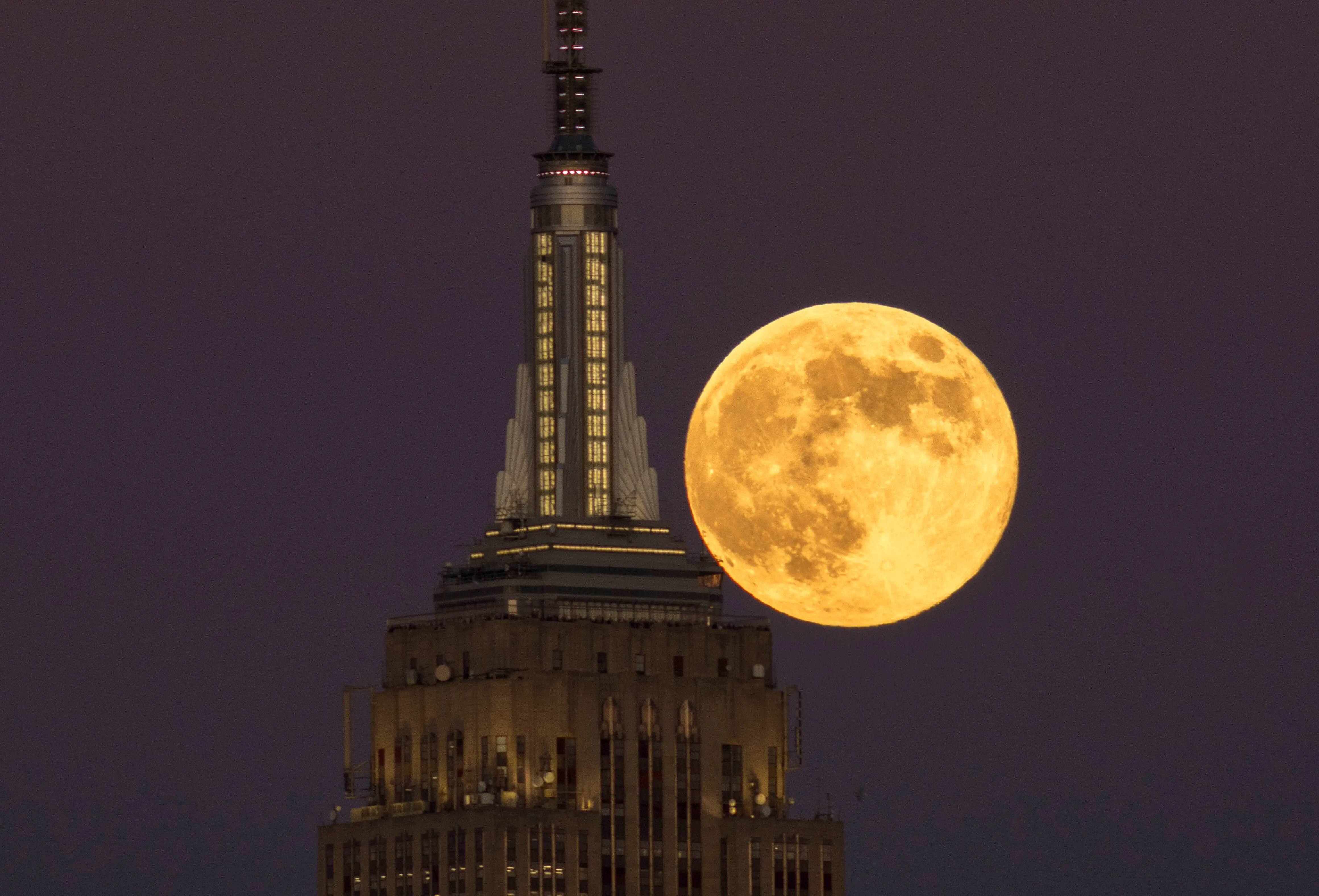Full Harvest Supermoon will rise on October 6, 2025, giving skywatchers a bright night spectacle
-
 JERSEY CITY, NJ - NOVEMBER 15: The full Beaver Supermoon rises behind the Empire State Building in New York City as the sun sets on November 15, 2024, as seen from Jersey City, New Jersey. (Photo by Gary Hershorn/Getty Images)
JERSEY CITY, NJ - NOVEMBER 15: The full Beaver Supermoon rises behind the Empire State Building in New York City as the sun sets on November 15, 2024, as seen from Jersey City, New Jersey. (Photo by Gary Hershorn/Getty Images)The night sky will feature a notable event on October 6, 2025, when the Harvest Supermoon rises, offering observers across the globe a chance to witness one of the brightest full moons of the year. Astronomers have confirmed that this full moon will appear larger and more luminous than usual, creating a striking view for stargazers.
What makes the Harvest Supermoon unique
The October full moon is traditionally called the “ Harvest Moon." This name comes from the time of time it appears, closest to the afterlife equinox in the Northern Hemisphere.
For farmers in earlier centuries, the brighter moonlight was useful in extending the crop season, allowing crops to be gathered latterly into the night. In 2025, the Harvest Moon will also qualify as a “supermoon".
A supermoon occurs when the full moon coincides with the Moon’s closest approach to Earth in its route, known as perigee. This makes the moon appear slightly larger and brighter in the sky than during a typical full moon. While the size difference may be subtle to the naked eye, the increased brilliance will be conspicuous, especially under clear skies.
Best time to watch the Supermoon
The Harvest Supermoon will officially reach peak illumination on the evening of October 6. Skywatchers are encouraged to look to the eastern horizon around moonrise, when the moon appears largest due to an optic effect known as the “moon vision."
At this point, the moon frequently looks bigger when it's low in the sky compared to when it's advanced outflow. For those in North America, moonrise will vary depending on position, but utmost regions will see it shortly after evening. Spectators in other corridors of the world, including Europe, Africa, and Asia, will also have good visibility of the event.
No special gear is really required to enjoy the supermoon, though binoculars or a telescope can enhance details on the lunar face.
Scientific and cultural significance
Although the Harvest Supermoon is usually admired for its beauty, scientists also take advantage of instances like these to learn about the Moon in greater detail. The brightness provides the detail that can be obtained on the lunar surface, such as craters and highlands, using comparatively simple instrumentation.
Culturally, the Harvest Moon has traditionally been associated with seasonal traditions and folklore. Several cultures see it as a sign of seasonal change, while others connect it with festivals or parties related to agriculture and the closure of summer.
Today, it is still a widely popular event for photographs, skywatching, and community stargazing events.
October 2025's Supermoon Harvest is just one of a number of supermoons in the year, but its coincidence with the autumnal season makes it particularly notable. Following this event, the next full moon will take place in November and will be referred to as the Beaver Moon.
Astronomers invite the public to put October 6 in their calendar and to observe the eastern horizon soon after sunset. The Harvest Supermoon will offer a time to see one of the more unusual lunar events of the year.
TOPICS: Supermoon
- The final supermoon of 2025 arrives this December as the Cold Moon — what it means and when you can see it
- Don’t miss the Cold Moon on December 4 — the last Supermoon of 2025 follows the Beaver Moon’s glow
- The biggest Supermoon since 2019 will rise this November - date, time, and best places to watch
- The biggest Supermoon of the year arrives on November 5 — here’s when and how to watch it